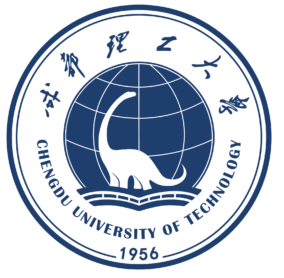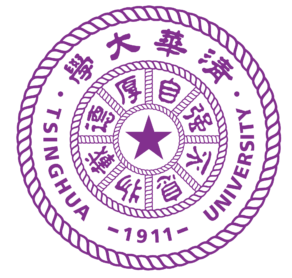
The Power & Energy Society (PES) provides the world’s largest forum for sharing the latest in technological developments in the electric power industry, for developing standards that guide the development and construction of equipment and systems, and for educating members of the industry and the general public. Members of the Power & Energy Society are leaders in this field, and they — and their employers — derive substantial benefits from involvement with this unique and outstanding association.
The Mission of PES is:
To be the leading provider of scientific and engineering information on electric power and energy for the betterment of society, and the preferred professional development source for our members ~ Approved by the IEEE PES Governing Board, 17 July 2003
PES’ Field of Interest is:
The scope of the Society embraces research, development, planning, design, construction, maintenance, installation and operation of equipment, structures, materials and power systems for the safe, sustainable, economic and reliable conversion, generation, transmission, distribution, storage and usage of electric energy, including its measurement and control.
PES’ Strategic Plan:
IEEE Power & Energy Society Strategic Direction: 2021 – 2025 Plan (PDF document)

China Society for Electrical Engineering (CSEE) is a national, academic and non-profit social organization voluntarily composed of scientific and technical workers and relevant units engaged in electrical engineering related fields and registered according to law. It was established in 1934. Its office is located in Beijing and is affiliated with the State Grid Corporation of China, Accept the professional guidance, supervision and administration of the registration authority of associations, the Ministry of civil affairs of the people’s Republic of China and the China Association for science and technology.
The purpose of China Society of Electrical Engineering: unite and mobilize the majority of Electrical Engineering Science and technology workers, promote the prosperity and development of Electrical Engineering Science and technology, promote the popularization and promotion of Electrical Engineering Science and technology, and promote the growth and improvement of electrical engineering scientific and technological talents; Serve economic and social development, improve the scientific quality of the whole people, serve scientific and technological workers and members, and contribute to the construction of an innovative country and a socialist harmonious society.

Renowned as China’s cradle for the national electronic industry, University of Electronic Science and Technology of China (formerly Chengdu Institute of Radio Engineering) is situated at Chengdu, the city of over a thousand-year-old cultural history in “the land of abundance”. In 1956, instructed by Premier Zhou Enlai, UESTC was founded on the basis of the incorporation of electronic divisions of the then three universities including Jiaotong Universities, Nanjing Institute of Technology and South China Institute of Technology. As one of the seven earliest key universities in national defense, UESTC became one of the nation’s key universities in 1960. Then, in 1997 it was included as one of the first universities into “Project 211”, a project in China for developing 100 first-class universities and a number of key fields of research for the 21st century. In 2001, UESTC was admitted into the nation’s Project 985, receiving special support for developing world-class universities and world-famous research-oriented universities. In 2017, the University was selected as one of “Double First-class” universities (Top 36).
Sixty years’ efforts and cultivations have witnessed the University’s process from sole dependence on electronic information engineering to all-around programs in electronic disciplines, and the University now turns out to be a key multidisciplinary university with electronic science and technology as its nucleus, engineering as its major field and featured the harmonious integration of science, engineering, management and liberal arts, well prepared at the call of the history to come up as a high-level research-oriented university.
In the new century, electronic information science and technology as the lead for modern high-tech development demonstrates a more swift and violent stance. In face of the new chances and challenges, the staff of the University will hold on its notion of “to seek facts and truth, to be noble and ambitious” in the pursuit of excellence and embark on the journey to a more glorious future.

Chengdu University of Technology (CDUT) was founded in 1956. The university was called Chengdu College of Geology before the year 1993. In May 2001, two other colleges amalgamated with the CDUT. CDUT was one of ministerial key universities under the leadership of the Ministry of Land and Resources before 2000. It is now one of Sichuan Province key universities.
CDUT is a diverse university with 15 teaching units including 14 colleges. The specialties of CDUT are mainly in science and engineering with additional programs offered in economics, liberal arts, management, law and philosophy. In recognition of our strength and consequence, 2 degree programs have been appraised as key specialties at the national level and other 11 at the provincial level. CDUT also has 2 key laboratories at the national level and other 6 key laboratories at the provincial level and another 35 research institutions. There are 53 degree programs for undergraduate students, 39 master programs and 16 doctoral programs. In addition, CDUT operates two post-doctoral research stations.
More than 25,000 students are enrolled full-time for the year 2004. The faculty numbers of the university are 2021,including 2 academicians of the Chinese Academy of Science, 62 doctorial tutors, 126 professors and 261 associate professors. Seventy-two of them have been awarded the State Council Special Allowance. CDUT has 2 positions for Changjiang Special Scholarships.
Since its foundation, CDUT has completed 2200 research projects, of which over 600 have been awarded prizes at the national, provincial and ministerial levels. Fifteen have received national patents. Since 1992, 26 teaching achievements and 26 textbooks compiled by CDUT staff have been awarded prizes at the national, provincial or ministerial levels. With faculty encouragement, Students individually and in teams participate in scientific research activities and various national and provincial competition activities such as “Challenge Cup” Scientific Production Competition, Enterprise Program Design Competition, Mathematic Model Creating Competition as well as Electronic Design Competition. These students and student teams have been awarded 132 national level and 48 provincial or ministerial level prizes.
In order to provide the highest quality education for its students, CDUT is positioned to make itself become one of the best universities in China and a famous university in the world.

The campus of Tsinghua University is situated in northwest Beijing on the site of the former imperial gardens of the Qing Dynasty, and surrounded by a number of historical sites.
Tsinghua University was established in 1911, originally under the name “Tsing Hua Imperial College”. The school was renamed “Tsing Hua College” in 1912. The university section was founded in 1925. The name “National Tsing Hua University” was adopted in 1928.
The faculty greatly valued the interaction between Chinese and Western cultures, the sciences and humanities, the ancient and modern. Tsinghua scholars Wang Guowei, Liang Qichao, Chen Yinque and Zhao Yuanren, renowned as the “Four Tutors” in the Institute of Chinese Classics, advocated this belief and had a profound impact on Tsinghua’s later development.
Following the outbreak of the War of Resistance against Japanese Aggression in 1937, National Tsing Hua University, National Peking University and Nankai University merged to form Lin-shih-ta-hsueh, which was renamed the National South-West Associated University in 1938 after moving to Kunming. In 1946 The University was moved back to its original location in Beijing after the war.
After the founding of the People’s Republic of China, the University was molded into a polytechnic institute focusing on engineering in the nationwide restructuring of universities and colleges undertaken in 1952. In November 1952, Mr. Jiang Nanxiang became the President of the University. He made significant contributions in leading Tsinghua to become the national center for training engineers and scientists with both professional proficiency and personal integrity.
Since China opened up to the world in 1978, Tsinghua University has developed at a breathtaking pace into a comprehensive research university. At present, the university has 21 schools and 59 departments with faculties in science, engineering, humanities, law, medicine, history, philosophy, economics, management, education and art.
With the motto of “Self-discipline and Social Commitment” and the spirit of “Actions Speak Louder Than Words”, Tsinghua University is dedicated to the well-being of Chinese society and to world development. As one of China’s most prestigious and influential universities, Tsinghua is committed to cultivating global citizens who will thrive in today’s world and become tomorrow’s leaders. Through the pursuit of education and research at the highest level of excellence, Tsinghua is developing innovative solutions that will help solve pressing problems in China and the world.

Department of Electrical Engineering and Applied Electronic Technology of Tsinghua University, founded in 1932, is one of the three earliest engineering departments established by Tsinghua University. In 1989, the former three majors of power system automation, high voltage technology and electrical engineering were merged into a major of “electrical engineering and automation”, which was listed in the national specialty recommendation catalogue. This discipline became the first batch of the key discipline and the doctoral degrees conferring unit of first-level disciplines. It has kept the first or A+ in the past national evaluation of disciplines. EEA has the State Key Laboratory for Safety Control and Simulation of Power System and Large Power Generation Equipment.
Department of Electrical Engineering now has 103 full-time teachers, including 35 senior engineers and 55 professorate senior engineers, 8 IEEE fellows. Aiming at both international frontier basic research and major needs of Chinese national economic construction, EEA has tackled key problems scientifically in electrical and electrical engineering industries, and won 27 prizes of National Natural Science Award, National Science and Technology Progress Award and National Technological Invention Award.
Department of Electrical Engineering has trained about 13,000 graduates by upholding the motto of “Rigorous in Learning & Righteous in Conduct” refined by masters as Gu Yuxiu, Zhang Mingtao and Gao Jingde and the goal of “cultivating outstanding talents with solid basic knowledge, innovating ability and broad international vision”. A large number of outstanding academic masters, business talents and backbones governing the country spring out, such as Academician Jin Yilian, a winner of the national top science and technology award, Ma Weiming, a winner of the Order of August 1, Zhao Xizheng, the first General Manager of the State Grid Corporation of China (SGCC), and Zhu Rongji, the former Premier of the State Council.

In response to the national call for action of “energy revolution” and “Internet +” and comprehensively promote the cutting-edge research, industry and talent cultivation of energy Internet strategy, mode, technology, equipment and standards, Tsinghua University has strategically deployed the energy Internet Innovation Research Institute of Tsinghua University (hereinafter referred to as the Research Institute) and Tsinghua Sichuan energy Internet Research Institute. With the strong support of the national energy administration, the energy Internet Innovation Research Institute of Tsinghua University was officially established in Beijing in April 2015, becoming the first professional research institution of energy Internet in China.
The Institute is committed to giving full play to Tsinghua University’s interdisciplinary comprehensive advantages, mature and efficient industrialization mechanism, strong industry influence and resource integration ability, and focuses on the policy and strategy research, innovation planning and design, key technology research and development, transformation of scientific and technological achievements, industrial ecological construction, talent training and aggregation of energy Internet, Strive to become a strategic decision-making think tank for a new generation of energy networks with deep influence in China and even the world.
The Institute focuses on energy strategy and energy policy analysis, energy innovation planning and design, and provides engineering application solutions of energy Internet technology. Closely relying on the advantageous scientific research strength of multiple energy and information disciplines such as electrical engineering of Tsinghua University, the Institute has successively established 13 research centers, 4 research laboratories and 1 joint research center, covering the main directions and fields of energy internet academic research and new technology research and development. In addition, the Institute has actively participated in the establishment of the national energy Internet industry and technological innovation alliance. As the Secretariat unit of the alliance, the Institute has played a positive role in interpreting and publicizing relevant national policies, gathering energy Internet technological innovation forces, and promoting the healthy development of the energy Internet industry.
Since its establishment, the energy Internet Innovation Research Institute of Tsinghua University has undertaken a number of national “Internet +” smart energy research projects, participated in a number of national policy-making to advocate the development of energy Internet technology and industry, and successfully developed a number of new energy Internet technology achievements. The work of the Institute was fully recognized and affirmed by Tsinghua University, and was successfully selected into the list of university level think tanks of Tsinghua University in June 2019.
Looking forward to the future, the Institute will continue to make great strides on the road of promoting the academic prosperity, technological innovation and industrial development of energy Internet, and strive to be the first!

Launched in March of 2019, Tsinghua SIGS is a research and graduate education institution of Tsinghua University located in southern China. Building upon Tsinghua’s academic legacy and Shenzhen’s innovative resources, our students and faculty are dedicated to tackling global challenges through cutting-edge research and collaboration.
Preparing future leaders for global challenges. At Tsinghua SIGS, our mission is to reshape graduate education as well as research and development to better serve local, national, regional, and global sustainable development. Here, we nurture the next generations of global leaders, tackle global challenges through international collaborations, and facilitate interdisciplinary research and industrial partnerships
Tsinghua SIGS has set up 6+1 theme areas that overcome traditional borders between academic disciplines and promote interdisciplinary research and learning. They include Materials Science, Data Science & Information Technology, Biopharmaceutical & Health Engineering, Ocean Engineering, Future Human Habitats, Environment & Ecology and Innovation Management.

